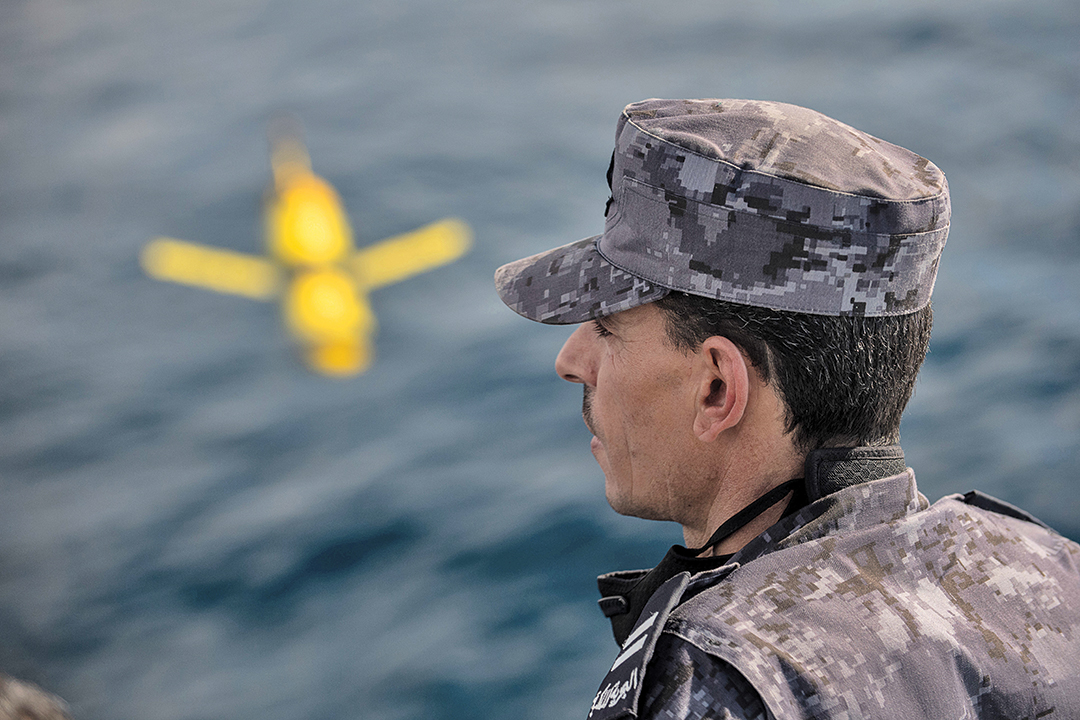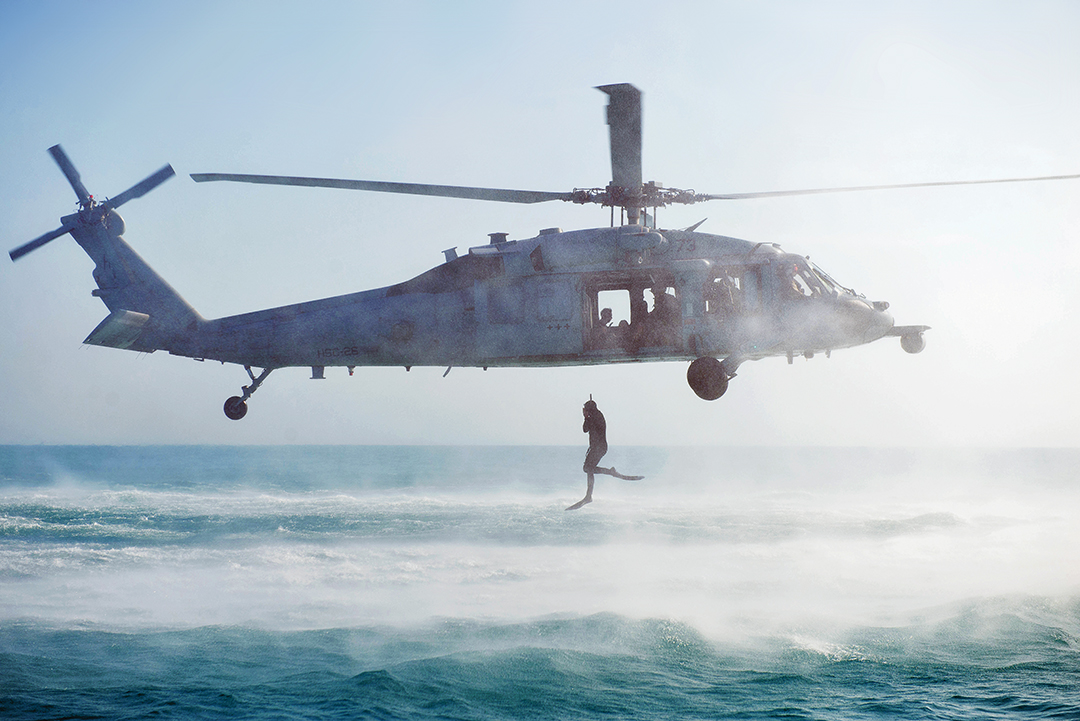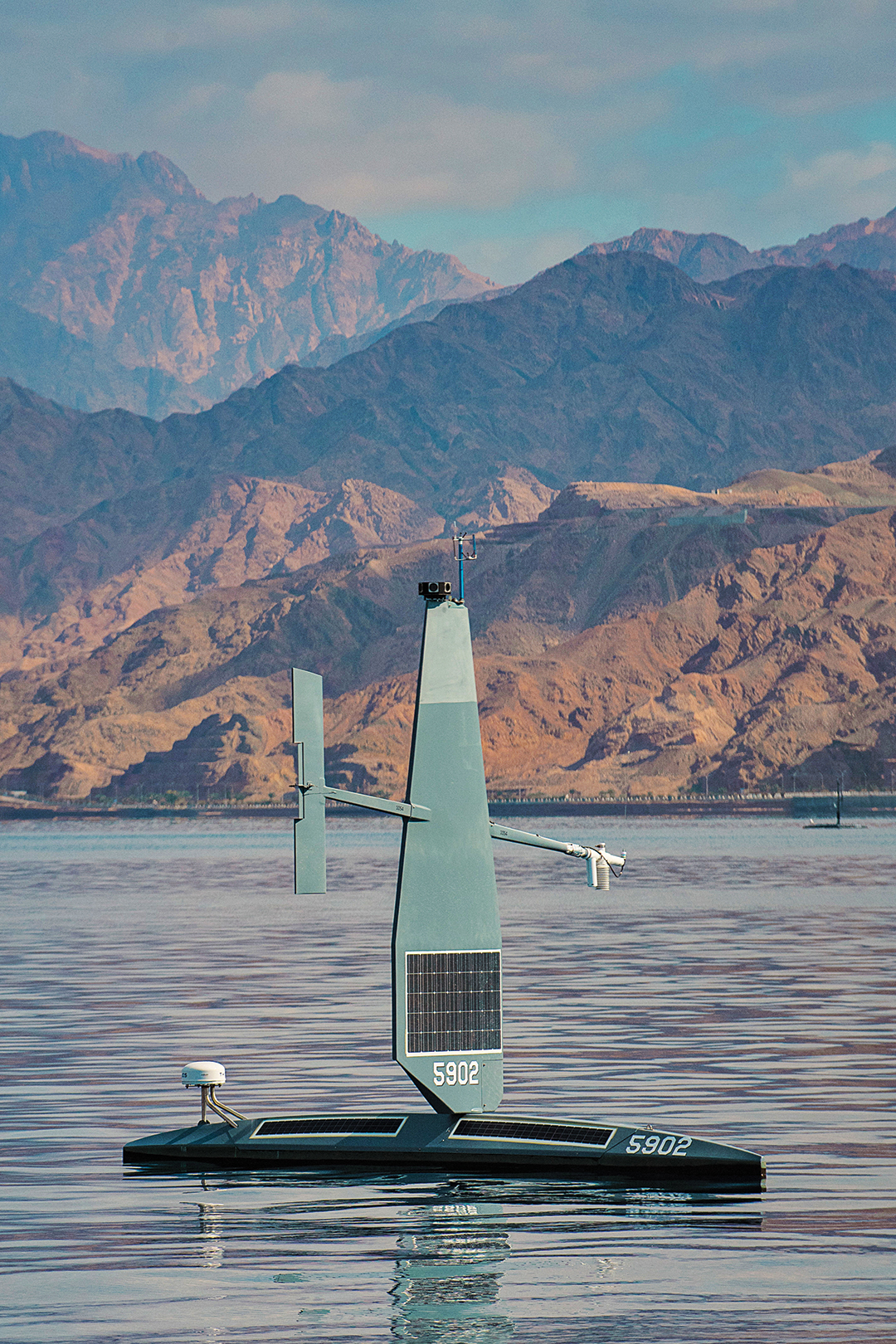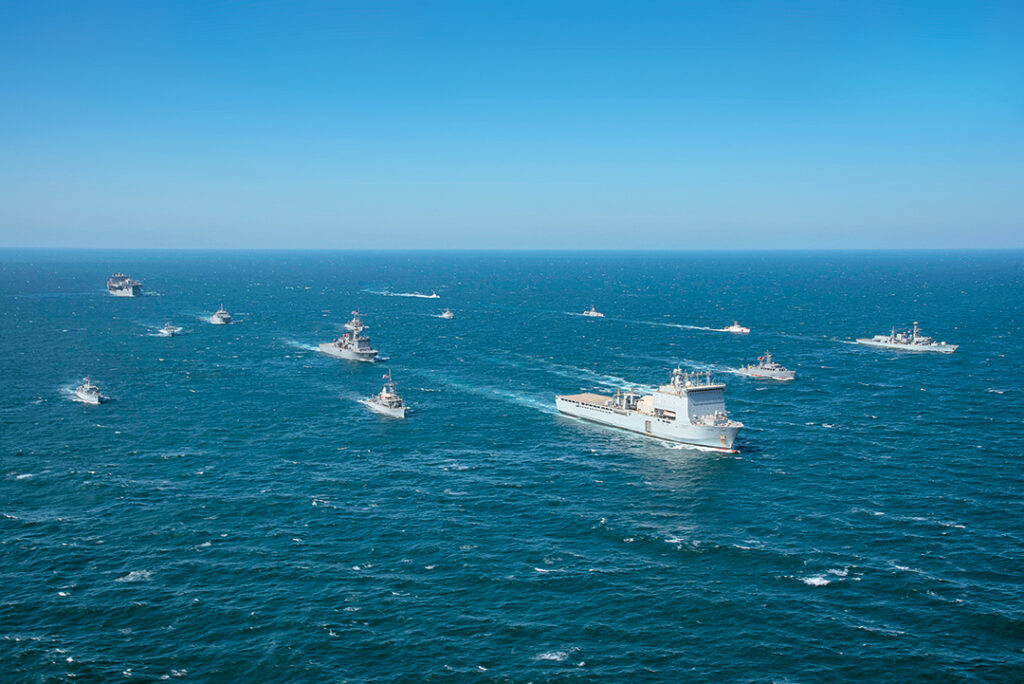UNIPATH STAFF
Navies have grappled with the same problem for thousands of years: They often lack the manpower and materials to patrol the breadth of the seas and protect maritime trade against predation.
Multinational naval forces engaged in the February 2022 International Maritime Exercise (IMX 22) tested a solution to that perennial problem, one that could transform the way fleets operate over the next several decades.
Unmanned vehicles — slithering underwater like metallic serpents, sailing on the surface under wind and solar power, and tracking ship movements from the skies — are reinventing the way navies fulfill their duties.
These automated warriors transmit the images they collect to operations centers where troops can evaluate the threat to vessels and ports before dispatching ships or aircraft to confront them more directly. In the future, reducing the need for human engagement even further, artificial intelligence could handle a greater share of the analysis function.
At IMX 22, which brought together a large coalition of navies in the Arabian Gulf, the Red Sea and parts of the Indian Ocean, more than 80 unmanned systems from 10 nations took part.
U.S. Vice Adm. Brad Cooper, commander of U.S. Naval Forces Central Command, dubbed IMX 22 “the largest unmanned naval exercise in the world.” Participants left the exercise impressed by the potential of oceangoing drones to stop criminals and terrorists.

“Now that we’ve seen these new systems perform, we’ll take the lessons learned and apply them very quickly to a real-world operations context,” Vice Adm. Cooper told senior naval leaders in Bahrain.
The International Maritime Exercise has existed for more than a decade as an assembly of regional and international naval forces dedicated to securing sea lanes in and around the Arabian Gulf and Red Sea.
As 60 navies gathered for the exercise’s seventh iteration, the training audience was divided into four combined task forces, each defending a different region.
Egypt commanded the western task force from the Red Sea’s Port of Berenice. Oman took charge of the eastern task force in the Arabia Sea south of Muscat. The United Arab Emirates (UAE) commanded the northern task force in the Arabian Gulf and Kenya the southern task force near the Horn of Africa. Naval personnel from countries such
as Saudi Arabia and Yemen also attended.
U.S. Navy Central combined IMX with the annual Cutlass Express exercise involving East African naval forces from bases in Djibouti, Kenya and the Seychelles.
Although exercise directors highlighted the benefits of unmanned systems, IMX did not neglect traditional tactics for securing the seas. Minesweeping; diving and demolition; sailing in formation; countersmuggling and counterpiracy operations; surface gunnery; and visit, board, search and seizure drills all played large roles in the 18-day exercise.
In the Port of Bahrain, U.S. Coast Guard trainers erected what they call “a ship in a box” to hone the skills of Bahraini and Emirati commandos. Metal shipping containers, linked to resemble the insides of a ship, provided the setting for the simulated raids to duplicate storming a hostile vessel.
As the six members of the black-clad Emirati Rapid Reaction Group rushed down a staircase to seize the ship, U.S. trainers created smoke and simulated explosions and noise to make the mission more realistic.

“We specialize in the protection of ships in territorial waters and have undertaken numerous missions against piracy and hijacking of ships,” one member of the Emirati Rapid Reaction Group said. “The IMX exercise was unique in that it included several scenarios in which we work with brothers from the Gulf countries and the American side. These exercises help to build close relationships with friends and exchange field experiences with them.”
One trainer, U.S. Coast Guard Petty Officer 1st Class Kyle Benenti, said he and his colleagues were looking forward to two weeks of intensive training that also included hand-to-hand combat.
“The UAE team has lots of real world experience,” Benenti said.
Jordanian Sailors and Marines underwent similar training in the Port of Aqaba, but also enjoyed a thorough introduction to the unmanned systems popularized at IMX 22. The Jordan Armed Forces, along with their U.S. partners, launched underwater, surface and aerial drones to detect and evaluate maritime threats.
The automated systems can monitor four to five times the area that manned ships can. The goal is to digitalize surveillance of the ocean so that more cargo ships can enjoy the protection of navies, particular while crossing maritime chokepoints.
As in the Red Sea, Bahraini Sailors conducted drone-based missions in the Arabian Gulf, earning the admiration of the IMX commander, British Royal Navy Commodore Donald MacKinnon.
The commodore noted how much U.S. and British Sailors learn from local Sailors who are able to distinguish friend from foe among busy regional shipping lanes. With the greater surveillance capacity of the new unmanned systems, those insights are more valuable than ever.
“It’s not a teacher-student relationship. It’s a partnership,” Commodore MacKinnon said. “There’s no sort of monopoly on the best ideas.”
The deputy exercise commander, Commodore Vaqar Muhammad of Pakistan, praised IMX as a demonstration of “global resolve to preserve the rules-based international order.”
“The best thing that we can take away from this exercise is how quickly we can get together and how quickly we can adapt to each other and start understanding each other’s language so that we are operating for a common cause.” Commodore Muhammad said.
Maj. Khalid Al Ali of the UAE Armed Forces, who served at the exercise’s operations center in Bahrain, said the focus on improved tactics and technology was indispensable for his country.
“We found new ways to upgrade our capabilities and use our equipment in real world conditions,” he said.
U.S. Navy Central and its partners plan to hold the next IMX in 2023. Turnout is expected to grow as more nations embrace automation and digitalization to patrol the seas more effectively. But as the 2022 events wound to a close, Vice. Adm. Cooper expressed appreciation for everything they had accomplished while training over millions of square miles of sea.
Said the admiral: “We succeeded because we planned together, we trained together and ultimately we led together.”
Watchfulness on the Waves
COL. HISHAM AL JARRAH, JORDAN ROYAL NAVY COMMANDER
In this new era of innovation and development, industry has focused on producing a method of defense that is safe, reliable and expendable. Because we value human life, we seek safe methods of executing our day-to-day jobs while also securing the lives of our families and loved ones within any given defense system in the world.
International Maritime Exercise (IMX) 2022 was a milestone deserving of greater media coverage. It was an international exercise in which over 60 nations and 20 industrial companies worked side by side to achieve maritime security.

PETTY OFFICER 2ND CLASS DAWSON ROTH/U.S. NAVY
IMX 2022 relied heavily on autonomous systems to execute its training scenarios in the Arabian Gulf, Gulf of Aden, Gulf of Aqaba and the Red Sea. That meant that typical maritime drills involving rescues at sea, tracking potentially hostile vessels and stopping incursions into territorial waters were conducted using unmanned systems instead of simply using conventional tools.
Here’s the type of scenario that uses the new technology:
An unknown vessel is approaching territorial waters. The first line of detection is an uncrewed surface vehicle made by Saildrone. The device is 3 meters long, 30 centimeters wide and has a 2-meter-high mast in its center. Powered by the sun and wind, it navigates the seas by satellite. It can sail a year without maintenance.
A camera atop its mast uses digital analysis software to detect vessels. The drone’s automatic identification system (AIS) uses a transponder to recognize ships that are internationally registered.
If the ship is registered, the drone will transmit its name, speed and course. If the ship is unregistered in the AIS, the drone provides a warning that includes an image of the vessel and its speed and course.
If the drone designates the unknown vessel as a subject of interest, the naval operations center will deploy an aerial drone to verify the sighting with a live video feed of the ship.
If the operations center determines that the target is hostile, it decides to either send a manned vessel to intercept or deploy a switchblade drone capable of destroying any small vessel.
With the first option, you are sending well- trained operators into the field with eyes in the sky giving them the hostile vessel’s heading and course, eliminating surprises if they need to take swift action.
With the second option, the unmanned switchblade device can trigger a missile launch with the guidance of aerial and sea drones.
At IMX 2022, all systems were tested and used in a real-life scenarios, helping to reduce risk for human operators and removing much of the human error from such escalating chains of events.
We are entering a new era of innovation and technology that will make this world a safer place for all law-abiding citizens.

